In-Depth Look at Compstick Systems in Kiteboarding
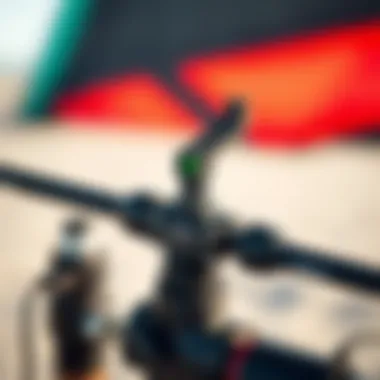
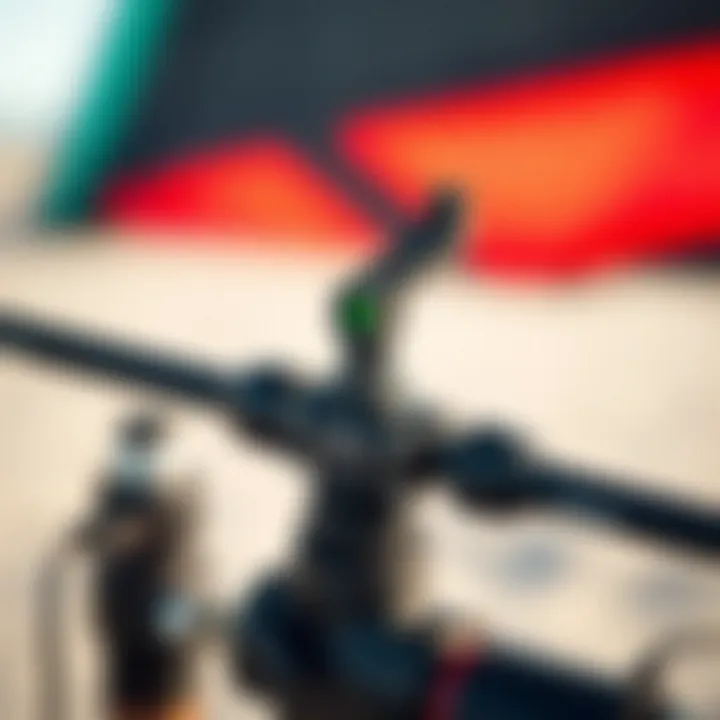
Intro
In the world of kiteboarding, the equipment is not merely an accessory; it’s a symbiotic partner that can dictate the rider's experience. One of the most intriguing components in modern kiteboarding is the compstick system. Understanding the design and functionality of these systems can unlock new levels of performance and enjoyment on the water. As we journey through the intricacies of compstick systems, we will discover how they work, their advantages, and the maintenance needed to keep them in top shape.
This article targets both beginners and seasoned kiteboarders, serving as a comprehensive guide to navigating the world of compstick systems. Whether you're feeling the exhilarating pull of your first ride or you are an expert executing advanced maneuvers, the insights provided here will enhance your understanding of these devices and improve your overall kiteboarding experience.
To delve deeper, we will explore the intricacies behind the compstick systems, starting from the essential equipment insights before transitioning to technique explorations that foster a deeper appreciation of the sport. So, grab your gear, and let’s get ready to pick up the wind!
Understanding Compstick Systems
The world of kiteboarding is a fascinating blend of skill, thrill, and technology. At the heart of optimizing this sport's performance is the Compstick system. This system has garnered attention for its innovative design and its significant impact on rider experience, making it vital to understand.
Understanding the Compstick system means grasping its essential role in kiteboarding. It combines components that ensure not only safety but also enhance maneuverability and control. For riders, especially those venturing into the sport, comprehending how it functions can mean the difference between an exhilarating ride and a challenging ordeal.
Definition and Purpose
A Compstick system marries several key elements, primarily the control bar, lines, and safety mechanisms, into a unified package. Its main aim is to grant the kiteboarder enhanced control over their kite while maintaining safety throughout the entire ride. By simplifying the connection between the rider and the kite, the Compstick allows for quick adjustments, which is crucial in diverse wind conditions.
Essentially, a Compstick system is the control center of kiteboarding, translating a rider's intentions into kite movements smoothly. Why does this matter? Because a well-functioning system can result in a more responsive kite. Riders can then enjoy heightened performance, whether they are attempting complex tricks or simply cruising along the water.
Historical Development
The evolution of Compstick systems is deeply intertwined with the advancements in kiteboarding technology. Early setups were often cumbersome, with separate bars and lines that could lead to tangling and confusion. It wasn't until the late 1990s, as kiteboarding began to gain traction, that systems like the Compstick started to emerge. They offered a more streamlined approach, consolidating the various components into a more practical design.
As kiteboarding progressed, so did the complexity and the capability of these systems. By the early 2000s, manufacturers began to innovate with safety features, ensuring riders could easily deactivate their kites in case of emergencies. The introduction of the Compstick marked a significant shift, as it provided both ease of use for newcomers and functionalities that experienced riders could appreciate. Today, we see ongoing advancements in materials and safety measures, with a focus on making the systems even more user-friendly while enhancing performance.
Understanding the historical context of Compstick systems enriches a rider's appreciation for their gear, as these systems stand on a foundation built through years of testing, feedback, and improvement.
Components of a Compstick System
A Compstick system is the cornerstone of kiteboarding, impacting every aspect of the sport from safety to performance. The various components must work in unison, ensuring both stability and control while riding. Understanding these elements not only enhances the rider's experience but also allows for informed decisions when purchasing or adjusting equipment. This section delves into the essential parts of a Compstick system, focusing on main lines, the control bar, and safety systems to draw a clearer picture of their significance.
Main Lines
The main lines of a Compstick system are pivotal in transferring force from the kite to the rider. Typically, these lines are made from robust, lightweight materials designed to withstand the wear and tear of the ocean's elements.
The significance of these lines cannot be understated; they directly influence the responsiveness and overall feel of the kite. Different line lengths and materials can drastically alter how a kite behaves in the air—something a rider must consider carefully. Riders often face a choice between stiffer lines or more forgiving ones. Stiff lines provide quicker response times, making them ideal for aggressive riding styles, while softer lines can offer more forgiveness, which can be advantageous for beginners.
"Choosing the right main lines can be the difference between an exhilarating ride and a frustrating experience."
In addition, the correct line setup helps to minimize tangling and maximize performance. Regular inspection of the lines should be part of any maintenance routine as frays or knots can lead to unexpected failures.
Control Bar
The control bar serves as the command center of the kiteboarding experience. It's the interface between the rider and the kite, offering a means to navigate and control direction. With features like adjustable widths, the control bar can be tailored to suit the preferences and size of the rider, allowing for a more personalized ride.
Common materials for control bars include aluminum and various composites—both of which provide strength without significant weight. Riders are advised to consider bar thickness and grip texture as these impact comfort and control.
One crucial feature is the depower mechanism, which allows the rider to easily reduce the kite's power during gusty conditions or tricky maneuvers. Familiarizing oneself with the control bar functions can greatly influence riding proficiency and safety. It’s also essential to note that many brands offer variations in style and functionality, catering to different riding levels.
Safety Systems
Safety is paramount in kiteboarding, and the safety systems integrated into Compstick systems are designed with this principle in mind. The safety leash, which connects the rider to the kite, is a vital component, allowing for quick releases in emergencies. Riders must ensure that their safety systems are functioning correctly before hitting the water. Leashes should be inspected regularly to prevent any potential hazards.
Another noteworthy inclusion is the quick release system, which has advanced significantly over the years. These systems are designed to detach the rider from the kite instantly in case of troubles, getting them out of precarious situations. Understanding how to operate these systems effectively can be a lifesaver.
Finally, many Compstick systems include features like safety handles or secondary lines that offer additional security, reinforcing the need for a thorough grasp of equipment and its safety measures.
Advantages of Compstick Systems
Understanding the advantages of Compstick systems is crucial for kiteboarders who aim to elevate their riding experience. These systems bring various benefits to the forefront, which can significantly affect performance in the water. The following subsections break down the key advantages, focusing on safety features, maneuverability, and user-friendliness.
Enhanced Safety Features
Safety is the bedrock of any sport, and kiteboarding is no exception. Compstick systems are designed with several safety features that help prevent accidents. One of the standout aspects is the ability to quickly release the control lines, allowing the kite to deflate and fall safely to the ground when needed. This is particularly valuable during high-wind situations where loss of control could lead to dangerous scenarios.
Additionally, many Compstick systems come integrated with reliable depower mechanisms. These allow riders to adjust the power of the kite instantly, giving them better control over their speed and height. In this unpredictable sport, such features can make all the difference between a thrilling ride and a potentially hazardous tumble.
Safety first! When choosing gear, make sure it aligns with the highest safety standards available.
Improved Maneuverability
Another shining feature is how Compstick systems improve maneuverability. The design allows kiteboarders to execute sharp turns and changes in direction more fluidly. This becomes essential, especially for performing tricks that require quick adjustments in flight. Compared to traditional systems, Compstick setups provide a more responsive feel, allowing for an intuitive connection between the rider and the kite.
When riding in varying wind conditions, this level of maneuverability can greatly enhance performance. Riders often find themselves able to navigate through challenging waves and gusty winds with ease, increasing confidence and control while navigating the water. Ultimately, enhanced maneuverability is not just a technical perk; it becomes integral to each session's enjoyment.
User-Friendly Adjustments
One of the real game-changers with Compstick systems is the ability to make user-friendly adjustments. Many modern designs incorporate simplified features that allow for quick, easy changes to line lengths or the bar's angle. Such capabilities ensure that kiters can customize their experience based on their skill level and the specific riding conditions.
Newbies may find this versatility less overwhelming, making it easier for them to get started. Likewise, experienced riders can tweak settings on the fly to optimize their rides for different conditions or tricks they want to attempt. In a sport where adaptation is vital, having easy-to-use systems can significantly affect a rider's learning curve and overall success.
In summary, Compstick systems stand out not only for their emphasis on safety but also for enhancing maneuverability and offering user-friendly adjustments. For anyone looking to get the most out of their kiteboarding experience, these advantages make a compelling case for considering Compstick technology. The combination of performance enhancement and practical design is what keeps riders coming back for more.
Disadvantages and Limitations
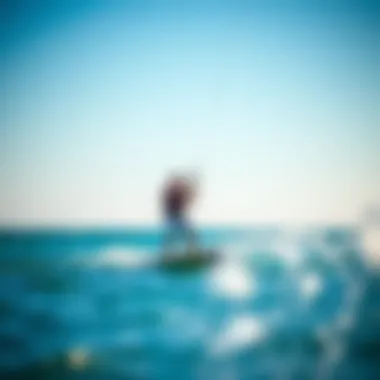
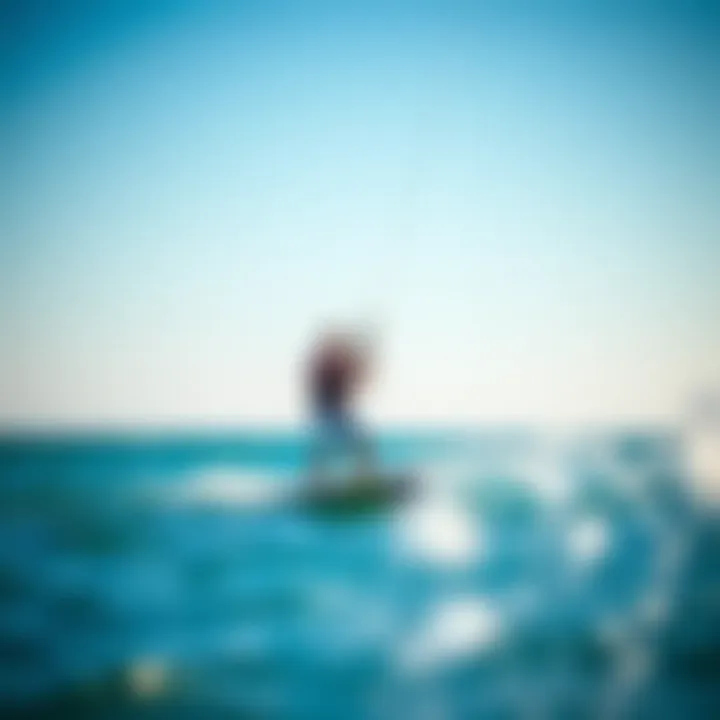
When discussing kiteboarding, it's crucial to not just take a look at the shining aspects of gear and systems but also to peel back the layers and examine the disadvantages and limitations that come along. Understanding these drawbacks is equally important as it sets realistic expectations for riders, from newcomers to seasoned veterans. Compstick systems, while enhanced in safety and performance, are no exception to this rule.
Complexity for Beginners
One of the most significant hurdles newcomers face with compstick systems is their inherent complexity. Unlike a traditional system which may be straightforward to set up and operate, compstick systems require a more nuanced understanding of mechanisms and adjustments. This complexity can lead to a steep learning curve.
For instance, a beginner might feel overwhelmed just trying to untangle the lines before their first ride. Without proper guidance or a solid foundation of knowledge, setting up the gear can turn into a frustrating experience.
To navigate this complexity, a focused approach is important:
- Educate yourself: Seek out instructional materials, either online or through local kiteboarding schools.
- Watch tutorials: There are numerous videos on platforms like YouTube that break down the setup process visually.
- Practice on land: Handling the gear on solid ground before hitting the waves can build confidence and familiarity.
Potential for Malfunction
Another area of concern is the potential for malfunction in compstick systems. With their more intricate designs come an increased risk of failure. While failure sounds dire, many issues can be mitigated with careful maintenance and inspection.
Yet, the average user may not recognize emerging problems before they escalate. A frayed line or a hitch in the control bar's mechanics can have consequences that go from a minor inconvenience to a potentially dangerous situation on the water. Keeping an eye out for potential warning signs can save a lot of trouble:
- Regular inspections: Every line should be checked for wear and tear before each session.
- Repairs or replacements: Don’t hesitate to change out damaged components instead of attempting to fix them unless you're knowledgeable.
- Consult an expert: Sometimes, a professional's assessment is the best way to catch hidden issues.
Compatibility Issues
Lastly, there are compatibility issues that kiteboarders must grapple with when using compstick systems. Because these systems are often designed with specific components in mind, trying to mix and match with parts from other systems might not yield good results.
For example, a control bar that doesn’t align perfectly with the kite can affect handling. Such compatibility issues can create not only performance discrepancies but also safety hazards. Riders should be wary of:
- Using parts from different brands: Even if they appear similar, parts made by other companies might not function as intended together.
- Upgrading components: Newer safety features may not work well with older components.
- Field-testing before a trip: Always ensure your setup works properly in a controlled environment before heading out in open water.
Choosing the Right Compstick System
Selecting the right compstick system can make or break your kiteboarding experience. It’s akin to finding the right pair of shoes for a marathon. If they don't fit well, you’ll end up with blisters and the inability to perform your best. The importance of this topic is not just about personal comfort but also about maximizing performance, safety, and convenience on the water. A well-chosen compstick system allows you to harness the wind's energy more efficiently and enjoy your time on the kite without constant adjustments or maintenance concerns.
Factors to Consider
When it’s time to choose your compstick system, several factors come into play. It's not only about the aesthetics or brand loyalty but rather a combination of functionality and comfort. Here are a few key elements to take into account:
- Riding Style: Whether you're a freestyler, a wave rider, or just love cruising, different systems cater to different styles.
- Skill Level: Newer riders might prefer systems that focus on safety and simplicity, while seasoned veterans might lean toward those that offer advanced features for performance.
- Kite Compatibility: Not all compstick systems mesh well with every kite. Always check for compatibility to avoid issues.
- Durability: Look for systems made from materials that withstand the wear and tear of regular use. You want something that can handle gritty sand and saltwater.
Thoughtful consideration of these factors can greatly enhance your kiteboarding sessions.
Brand Comparisons
With numerous brands on the market, figuring out which compstick system to choose can be daunting. Each brand has its own merits and specialties. For example, Naish has been in the industry for years and is renowned for its reliable safety systems, while Duotone provides modern designs that emphasize user customization. Here's a brief comparison:
- Naish: Known for sturdy construction and reliability, perfect for beginners and experts alike.
- Duotone: Excellent options for customization, appealing to riders who appreciate personalization in their gear.
- Cabrinha: Offers innovative designs focusing on performance metrics like faster turning and more responsive control.
- Core: Esteemed for lightweight systems that offer agility without compromising safety.
Each brand has a targeted audience, so consider what aligns most with your riding preferences.
Personal Preferences
Lastly, when selecting a compstick system, your personal preferences hold significant weight.
- Comfort: How does the system feel in your hands? Some riders prefer a softer grip, while others might like a firmer one.
- Weight: A lighter system may feel more responsive but make sure it doesn’t compromise on durability.
- Aesthetics: The look of your gear may not affect performance, but it sure can influence your confidence on the water.
In the end, your gut feeling and comfort level play crucial roles in your choice. Always prioritize what feels right for you as you gear up for your next kiteboarding adventure.
"A rider's connection to their equipment is not just about performance; it's about trust and comfort. Choose what suits your style, and the rest will follow."
For more detailed insights on choosing kiteboarding gear, check out Wikipedia or community discussions on Reddit.
Taking the time to choose the right compstick system not only enhances your personal riding experience but can also extend the life of your gear. Happy kiteboarding!
Maintenance and Care
Maintaining your compstick system is crucial for ensuring not only optimal performance but also safety while kiteboarding. Unlike more straightforward systems, compstick setups require a bit more diligence in their upkeep due to their intricate design and various components. Regular maintenance minimizes the chance of accidents—it’s better to spot a potential issue on land than to find out mid-flight. Moreover, proper care can extend the lifespan of your gear, saving you bucks in the long run and keeping you on the water instead of at the repair shop.
Regular Inspections
Being proactive about inspections cannot be overstated. Regularly checking your compstick system allows you to pinpoint areas that may need attention before they become problematic. A simple visual inspection should include:
- Lines: Examine for fraying or thinning, which can greatly affect performance.
- Control Bar: Look for any signs of wear, especially at the grip area, where most handling occurs.
- Safety Systems: Ensure that quick releases are functioning correctly and are free from dirt or sand.
It’s prudent to carry out these checks before each session. Get into the habit of making this a part of your pre-ride routine. A few minutes spent inspecting your gear can mean the difference between a thrilling ride and a nasty fall.
Cleaning Procedures
Dirt and grit can be the silent enemies of your compstick system. Things like sand, saltwater, and general debris can wear down your components over time. While it might not seem like a big deal at first, neglecting to keep your system clean can lead to serious damage.
To clean your gear:
- Rinse: After each ride, especially in saltwater, rinse your control bar and lines with fresh water. This helps remove any salt or sand that could corrode or degrade the materials.
- Wipe Down: Use a soft cloth to wipe down each part, particularly the control bar and any adjusters. Be gentle but thorough.
- Dry: Allow everything to air dry completely before rolling it up. Storing damp gear can lead to mold or mildew.
By making a habit of proper cleaning, you'll not only maintain the effectiveness of your compstick systems but also contribute positively to their longevity.
Repair Techniques


Despite the best care, wear and tear are part and parcel of any gear used in challenging environments. If you find a frayed line or a malfunctioning control bar, knowing how to repair it promptly can save your day.
- Line Repairs: Minor frays can sometimes be fixed by re-tying if they haven’t compromised the overall integrity. If damage is significant, consider replacing the line entirely.
- Control Bar Issues: If there’s a problem with the grip or if the bar is breaking, contact your manufacturer for specific guidance. Many companies offer well-documented repair services.
- Safety Systems: Make sure backup systems are immediately available. It’s wise to practice how to manage your safety systems, especially in a high-pressure setting.
Remember that attempting to repair without proper knowledge can do more harm than good. Some issues might require professional help, so don’t hesitate to reach out to experts when necessary.
To sum it up, a diligent approach toward maintenance and care will yield dividends in the form of enhanced safety and performance on the water. For more tailored advice on gear care, consider checking forums such as reddit.com/r/kiteboarding or the latest on techniques from experienced riders on kiteboarding.org. Keep your gear in top shape and ride with confidence!
Practical Tips for Using Compstick Systems
Using compstick systems can greatly influence your kiteboarding experience. Knowing how to properly set up your gear and adjust to the changing conditions can enhance safety and performance. Here are some insights to guide you through the practical aspects of utilizing compstick systems effectively.
Setting Up Your Gear
Proper setup is crucial for safety and efficiency when kiteboarding. First, make sure that all components—lines, bar, and safety systems—are correctly rigged. A simple oversight can lead to performance issues or, worse, accidents. Here’s a step-by-step guide to ensure you’re on the right path:
- Inspect the lines: Check for any fraying or damages. A compromised line can seriously impact your kite's control.
- Align your lines: It’s important that your lines are untangled and properly aligned. This eliminates unnecessary tension and helps in smoother handling during rides.
- Firmly attach the control bar: Ensure the bar is secured in place. This is the direct link between you and the kite, and any looseness can result in failures.
- Test safety features: Familiarize yourself with the safety systems like the quick-release mechanism. Make sure you can operate it easily, especially in a high-pressure situation.
By following these steps, you maximize the chances of a seamless ride while minimizing risks. Take your time when setting up; rushing can lead to costly errors.
Adjusting to Conditions
Adapting to local wind and water conditions is the name of the game in kiteboarding. Every day on the water is different, and knowing how to respond can turn an average session into an extraordinary one. Here are some considerations:
- Wind Speed: Before heading out, gauge the wind speed using an anemometer or by observing flags onshore. For instance, if the wind is gusty, you might want to adjust your trim or choose a smaller kite to have more control. Conversely, steady winds might allow you to opt for larger kites for better lift.
- Water Conditions: The state of the water—whether it's choppy, flat, or has strong currents—plays a role in how your compstick works. If the water is rough, consider altering your riding style and maintaining a lower profile to slice through the waves.
- Personal Comfort: Always consider your own comfort level. Knowing when to tackle stronger winds versus when to play it safe is essential. If you feel uneasy with the conditions, it might be best to sit it out.
In kiteboarding, flexibility is key. The ability to adjust not just your gear but also your riding style can significantly affect your overall experience. As you take to the water, keep your mindset open; embrace the changing conditions and make them work for you!
"Adaptability is about the powerful difference between adapting to cope and adapting to win."
Ensure that you constantly educate yourself and converse with other kiteboarders in community forums, like those on Reddit or Facebook groups, as they often share insights on real-world experiences and conditions.
Comparative Analysis with Other Systems
Comparative analysis of compstick systems against other kiteboarding systems is crucial to gaining a comprehensive understanding of their unique advantages and potential drawbacks. By leveraging the insights from this comparison, riders can make informed choices that align with their skill levels, specific needs, and preferences. Within this context, we will explore two primary alternatives: hook-based systems and alternative control bars. Each offers distinct functionalities that enhance or inhibit the kiteboarding experience in various ways.
Hook-Based Systems
Hook-based systems have become a staple in kiteboarding due to their simplicity and reliability. At the heart of these systems lies a traditional control mechanism that connects the rider to the kite via a hook on the control bar. Here’s a closer look at their characteristics:
- Ease of Use: For beginners, hook-based systems typically present less of a learning curve compared to compstick systems. The straightforward design promotes quick understanding and confidence.
- Stability and Control: Riders often report feeling more stable, especially in gusty conditions. The hook allows for a more direct connection to the kite, leading to improved control during maneuvers.
- Limitations: However, the simplicity can be a double-edged sword. Hook-based systems generally lack the versatile adjustments found in compstick designs, which can limit performance for seasoned riders.
A common perspective among enthusiasts is that, while hook-based systems can suffice for beginners, they may not be the best choice for those seeking advanced performance. "I learned on a hook system, and while it was good for starting out, I wanted something that could grow with me as I improved. That's when I switched to a compstick," noted one kiteboarding enthusiast.
Alternative Control Bars
Meanwhile, alternative control bars also merit attention in our comparative analysis. These bars present varied designs that aim to enhance the connection between the rider and the kite. Here are some typical aspects:
- Customization Options: Many alternative control bars permit a range of customization settings. This can involve adjusting the length, width, and even the manner in which the lines engage with the kite. As a result, more experienced riders might find that these systems better meet their unique riding styles.
- Innovative Features: Some bars are equipped with features such as depower lines that respond rapidly to rider adjustments or advanced safety mechanisms, setting them apart from traditional compstick systems.
- Challenges with Transitioning: Riders switching from a compstick to an alternative control bar could experience a learning curve. Diplomatically navigating this shift is essential, particularly when it comes to understanding new safety features.
User Experiences and Testimonials
Understanding the perspectives of those who actively use Compstick systems is crucial for anyone considering venturing into kiteboarding or enhancing their current setup. Both beginners and seasoned riders add to the tapestry of knowledge surrounding these systems, offering unique insights that come from real-life experiences. This section explores the varied testimonials reflecting on the usability and effectiveness of Compstick systems, shedding light on what users truly value.
Beginner Perspectives
For novices, the world of kiteboarding can feel like a vast ocean of information. Their experiences are often marked by the initial excitement of the sport and the challenges faced while learning. A common theme among beginners is the ease of use that Compstick systems promise. Many users highlight how the integrated safety features, such as quick-release mechanisms, have made them feel more secure while they grapple with their developing skills. They mention,
"When I first started kiteboarding, I was quite nervous. The Compstick setup gave me the confidence to go out there and try new things without feeling too overwhelmed. The safety release is a game-changer!"
Another important factor is adjustability. Newbies appreciate how straightforward it is to modify the setup to suit varying wind conditions. Many beginners indicate that they were able to easily tweak the settings on their control bar, which allowed them to adapt to their environment, something that can often be daunting for those fresh to the sport. They often remark that,
- Convenience: Adjusting line lengths and control settings is manageable, providing them a sense of autonomy.
- Learning Curve: Beginners also note the learning curve is more approachable, reducing the frustration that can accompany the initial stages of kiteboarding.
Overall, feedback from new kiteboarders underscores the value of community and sharing experiences; they find reassurance in hearing from those who have successfully navigated the early stages as well.
Expert Feedback
As one gains experience in kiteboarding, the perspective shifts significantly. Experts, with their developed skills and expanded knowledge, focus on the performance aspects of Compstick systems. They provide valuable insights regarding advanced features that enhance overall kite handling and power control. Notably, many experts appreciate the stability and precision that Compstick systems offer, which is essential in high-stakes riding scenarios.
Expert riders often share that, with Compstick systems, they can push the limits of their performance, stating things such as,
"I've tried many control systems, but Compstick consistently delivers superior performance in rough water. The feeling of control is unparalleled."
Among the points raised, these stand out:
- Durability: Experts emphasize the robust materials used in the construction of these systems, which withstand the wear and tear of rigorous use and varied environmental conditions.
- Versatility: Many find that Compstick systems cater well to different riding styles – from freestyle to wave riding, making it an all-rounder choice.
Furthermore, experienced riders speak to the community-driven evolution of Compstick technology. They notice how feedback has influenced product design, making advances responsive to real-world applications. Riders with years in the sport often recommend connecting with fellow enthusiasts in forums or engaging in discussions on platforms like Reddit or Facebook to continue learning and sharing ideas.
The Future of Compstick Technology
The progression of compstick technology holds significant implications for kiteboarding enthusiasts. As the sport evolves, so too do the systems that facilitate the exhilarating experiences riders seek. Looking to the future, it’s crucial to understand the innovative advancements that are poised to alter how kiteboarders interact with their gear. These developments could enhance safety, boost performance, and cater to the increasing demand for user-friendliness in kiteboarding systems.
Innovations on the Horizon
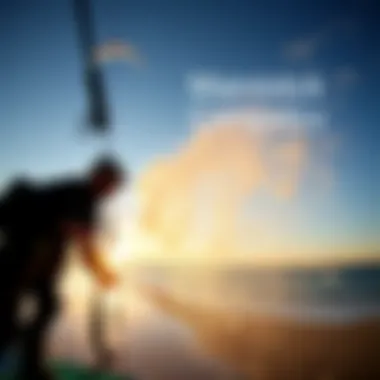
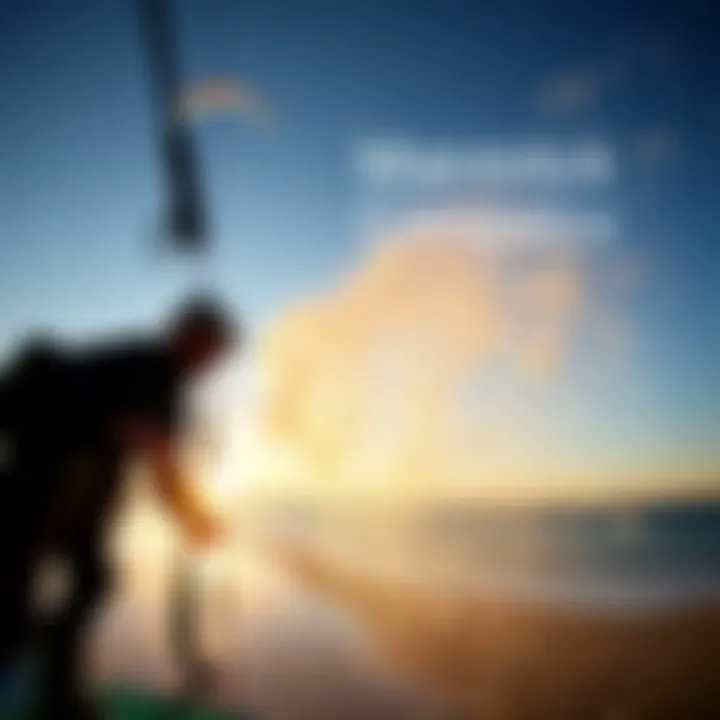
One of the most exciting aspects of compstick technology is the potential for groundbreaking innovations. For instance, the integration of smart technology allows riders to analyze their performance through embedded sensors in the control bar, providing real-time data on speed, elevation, and wind conditions. This kind of feedback can help both novice and expert kiteboarders refine their techniques and enhance their rides.
In addition, adaptive materials are being explored. These materials can adjust their stiffness or flexibility based on environmental conditions. This means that a compstick system might become more rigid on a windy day for better control, but soften up during calmer winds to allow for a smoother ride.
"Innovation is the ability to see change as an opportunity – not a threat."
– Anonymous
Market Trends
As the demand for higher-quality compstick systems increases, market trends are shifting to accommodate this change. More companies are focusing on sustainable manufacturing processes. Consumers are becoming aware of the environmental impact of their purchases, leading brands to pursue eco-friendly materials and practices. Kiteboarding companies are now innovating their production processes to reduce waste and use recycled materials, ensuring they contribute positively to the environment.
Moreover, there is a trend towards customization. Riders are wanting gear that not only performs well but also reflects their personal style. From customizable control bars to unique safety features, the market is becoming more diverse, offering various options that cater to individual preferences.
Regulatory Aspects
Regulatory aspects in kiteboarding, particularly regarding compstick systems, hold tremendous significance. They not only govern safety but also dictate how products are designed and manufactured. Understanding these regulations helps both manufacturers and users adhere to expected standards, ensuring safer and more reliable gear. In essence, having a grip on these rules can enhance a kiteboarder's experience, reduce risks, and promote sustainable practices within the community.
Safety Standards
When discussing safety standards, it's clear they play a critical role in shaping the kiteboarding landscape. Every component in a compstick system, from the control bar to the lines, must meet rigorous safety benchmarks. This is vital because kiteboarding, with its thrilling highs, can also pose hazards if gear isn't up to snuff.
To ensure safety, here are some key points related to safety standards:
- Materials Testing: Components should undergo various tests to check durability and resistance against wear. For instance, materials like Dyneema or Spectra often used in lines have specific tensile strength requirements.
- Design Specifications: Regulatory bodies often set down guidelines on how equipment must be designed. Control bars need to be ergonomic and offer quick-release mechanisms that effectively minimize risks during intense conditions.
- Certification: Many manufacturers seek certification from organizations such as the International Kiteboarding Association (IKA). This indicates that specific products have been evaluated for safety and fit criteria.
Adhering to these standards not only supports safety but also encourages a culture of responsibility among kiteboarders and manufacturers alike. It's crucial for riders to check if their gear complies with these recommendations to avoid accidents that could be avoided.
Regulatory Challenges
Navigating the regulatory challenges surrounding compstick systems can be quite a task. With the sport's evolving nature, adhering to regulations is not as straightforward as one might think. Here are a few issues often faced:
- Variability in Regulations: Not all regions enforce the same safety standards. What might be acceptable in one country could be critically underwhelming in another. This can confuse both manufacturers aiming for global markets and consumers trying to find safe gear.
- Evolving Technology: As technology advances, older regulations may not account for new innovations in design and materials. This ongoing advancement can make it challenging to establish consistent standards.
- Lack of Awareness: Many kiteboarders, particularly beginners, might not be aware of the importance of compliance with safety regulations. Without knowledge about the necessity of standards, they may inadvertently use gear that doesn't meet safety protocols, increasing risk.
"Staying informed about the regulations and standards in kiteboarding can significantly improve not just your safety, but also the overall community experience."
Thus, understanding regulatory aspects, from safety standards to the challenges that come with them, forms the backbone of a safe kiteboarding experience.
Environmental Considerations
The nature of kiteboarding has led to growing concerns about its environmental impact. As enthusiasts flock to the water, the relationship between kiteboarding equipment and the surrounding environment becomes increasingly important. When discussing systems like compstick, it's paramount to consider how such designs can align with sustainability and responsible use of our natural spaces. Not only does this ensure the longevity of the sport, but it also speaks volumes about the collective responsibility of both manufacturers and users to minimize their ecological footprint.
Sustainable Materials
The use of sustainable materials in compstick systems is a crucial aspect to look into. Kiteboarding is typically seen as an activity that relies heavily on synthetic materials, which can contribute to plastic waste and pollution over time. However, with the advent of new technologies and eco-consciousness, many manufacturers are now exploring alternative materials.
For instance, certain manufacturers are looking to adopt natural fibers such as hemp or bamboo for harnesses and boards. These materials offer the necessary strength while being biodegradable at the end of their lifecycle. Moreover, some control bars and lines made from recycled plastics are emerging, allowing kiteboarders to enjoy their sport while supporting a circular economy.
This shift towards sustainable materials is more than just a trend; it's about changing industry norms. As users, we need to look out for certifications or labels that indicate the use of environmentally friendly materials. That way, each purchase contributes to the greater good.
Eco-Friendly Practices
Beyond the materials themselves, the manufacturing processes involved are equally significant. Eco-friendly practices encompass a range of methods employed to reduce waste and pollution during production.
Many brands are now taking the pledge to limit harmful chemicals used in the production of their control bars and strings. The reduction of carbon emissions in production plants is vital for a healthier planet. A notable example can be found in companies that operate with renewable energy sources or employ water-saving techniques during manufacturing.
Additionally, it’s essential for kiteboarders to take individual responsibility in practicing eco-friendly habits. Simple actions like cleaning up after a session, being mindful of wildlife, and choosing to kite in designated areas can go a long way.
When we engage with our local communities and raise awareness about the importance of these practices, it amplifies our collective efforts and showcases our commitment to preserving the environment.
Remember: A responsible kiteboarder is an empowered one. Choices made today regarding materials and practices will have a lasting impact on the sport we love tomorrow.
Useful Resources:
- Environmental Impacts of Kiteboarding
- Sustainable Practices in Watersports
- Kiteboarding Discussions on Sustainability
By being aware of environmental considerations and taking actionable steps, both manufacturers and users can contribute to a healthier planet while enjoying the exhilaration of kiteboarding.
Community Insights
The role of community insights in understanding Compstick systems cannot be understated. In kiteboarding, just like in many sports, the collective knowledge and experiences of individuals enrich the learning curve for newcomers and seasoned users alike. It can serve as a bridge for exchanging information ranging from technical know-how to personal anecdotes, creating a tapestry of knowledge that enhances the sport as a whole.
Forums and Discussions
Kiteboarding enthusiasts often frequent online forums, where they share their insights and experiences related to Compstick systems. These forums act as a treasure trove of information, where kiteboarders can pose questions, seek recommendations, or share troubleshooting tips.
- Sharing Experiences: Users post reviews of various Compstick models, detailing their own preferences, adjustments, or techniques. This real-world feedback is invaluable for others contemplating a purchase or trying a new setup.
- Troubleshooting: Many discussions revolve around resolving common issues faced when using Compstick systems. For example, if someone finds their control bar is causing excess steering, others might suggest checking line tension or modifying the setup to suit specific riding conditions.
- General Advice: From learning curve strategies to safety tips, the community is quick to offer advice. The informal atmosphere encourages candid conversations, making it easier to ask even the toughest questions.
The benefit of such discussions extends beyond immediate problem-solving; they foster relationships between kiteboarders, contributing to a sense of belonging within the sport.
Events and Gatherings
Participation in kiteboarding events and gatherings is a crucial element of community engagement, particularly for Compstick system enthusiasts. These meet-ups serve various purposes:
- Networking Opportunities: Events enable riders to meet fellow enthusiasts, instructors, and brand representatives. This exchange often leads to deeper insights on gear performance and preferences.
- Hands-On Experience: Attending workshops, competitions, or demo days allows individuals to physically interact with different Compstick systems, giving them a firsthand understanding of the components, like the control bars or safety mechanisms.
- Learning from Experts: Prominent figures in the kiteboarding world often host seminars or panels at events, sharing their insights into the future of Compstick technology or advanced riding techniques that can take your skills to the next level.
"Involving yourself with the kiteboarding community changes the game; knowledge is power, and shared experiences can make all the difference in your riding journey."
Overall, community insights shape the kiteboarding experience and contribute to the growth and evolution of Compstick systems. Engaging with forums and participating in events not only builds skills and confidence but also cultivates a supportive environment, turning individuals into a cohesive community.
Closure
When reflecting on the significance of compstick systems in kiteboarding, one can hardly disregard their influence on both safety and performance. Compstick systems offer a blend of control and reliability that enhances the overall experience for riders at any skill level. As the kiteboarding community evolves, understanding these systems becomes not just a luxury, but a prerequisite for enjoying the sport safely and effectively.
Summarizing Key Points
- Safety: One of the standout benefits of compstick systems lies in their safety features. These ensure that a rider can quickly disengage from the kite in situations that could lead to injuries. The well-designed safety systems allow real-time adjustments to be made, giving riders the edge in managing their safety with ease.
- Performance: Maneuverability is another crucial aspect. The compact and sleek design allows for fine-tuning that becomes second nature for experienced kiteboarders. It provides them the ability to perform complex tricks and handle varying wind conditions with greater agility.
- User-Friendliness: Despite some complexities, the accessibility of compstick systems is notable. Especially for newcomers, the features can be understood and utilized effectively with a little guidance. Learning the ropes becomes more manageable, which is a boon for both instructors and students.
Final Thoughts
To further explore the nuances of kiteboarding gear, resources like Wikipedia on kiteboarding or forums on Reddit are invaluable. Remember, a well-informed kiteboarder is not just riding the waves; they are riding them with confidence.







